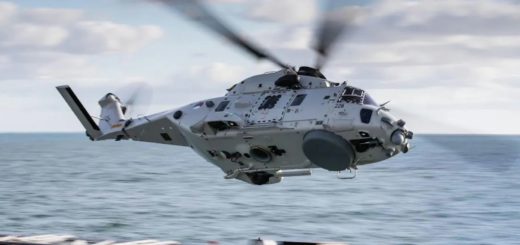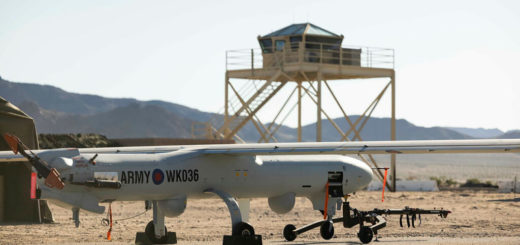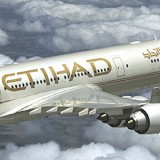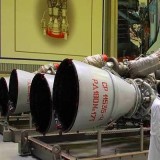South Korea could export up to 100 FA-50 Fighting Eagle light attack aircraft to Egypt in largest deal to date
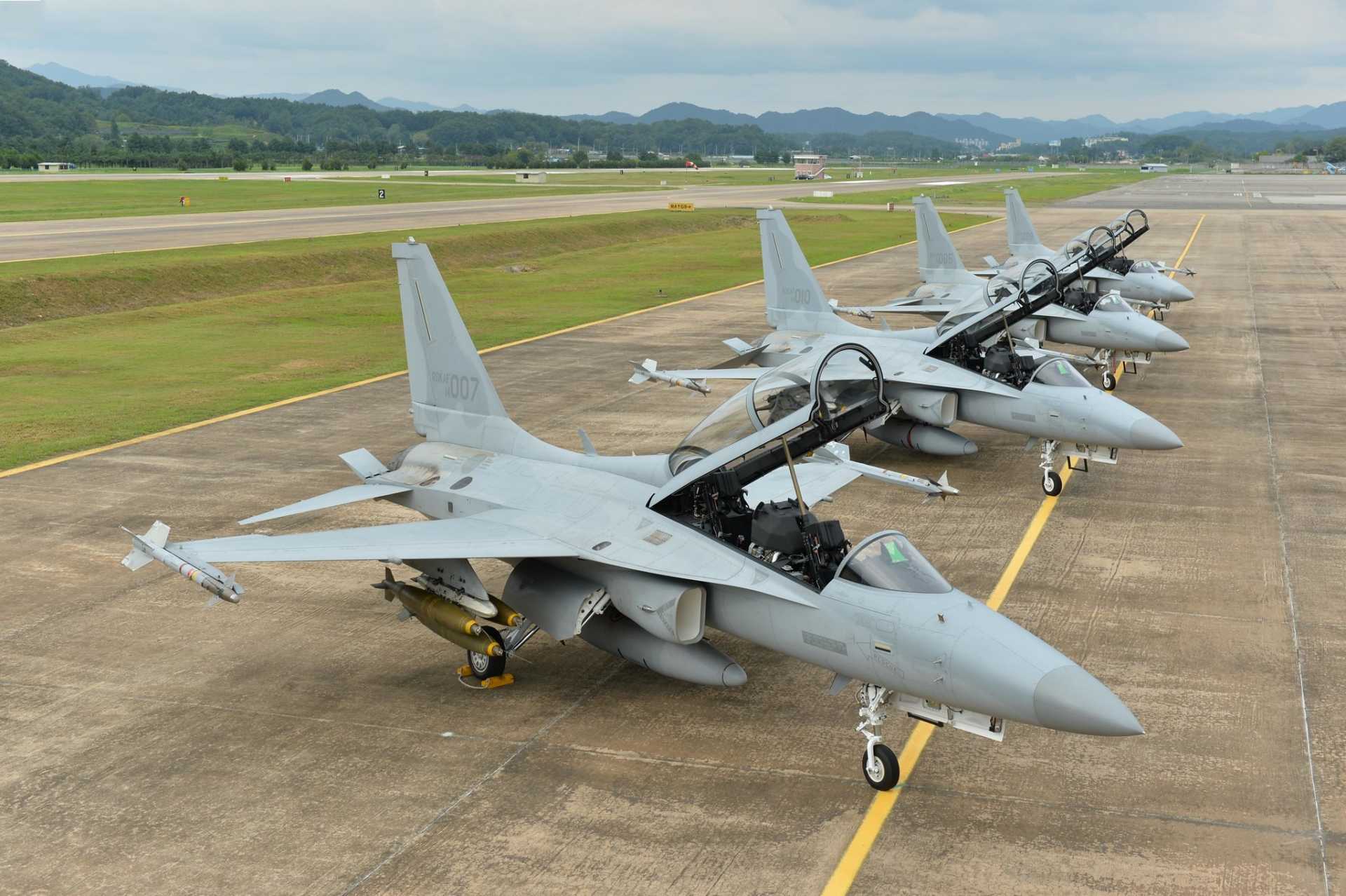
{loadposition bannertop}
{loadposition sidebarpub}
According to DefenceWeb on April 15, 2025, Egypt is in the final stages of negotiations with South Korea for the acquisition of up to 100 FA-50 Fighting Eagle light attack aircraft. The proposed deal, which includes a technology transfer component and local production of the majority of the aircraft in Egypt, aims to modernize Egypt’s air force and expand its defense industrial base. The acquisition plan also reflects increasing strategic cooperation between Egypt and South Korea.Follow Army Recognition on Google News at this link
The FA-50 Fighting Eagle has become one of South Korea’s most successful defense exports, gaining traction in multiple markets for its combination of affordability, versatility, and combat effectiveness. (Picture source: KAI)
On March 23, 2025, Egyptian Ambassador to South Korea Khaled Abdelrahman stated in an interview with Yonhap that Cairo is close to signing a contract with Korea Aerospace Industries (KAI). According to DefenceWeb, the agreement reportedly involves up to 100 FA-50 aircraft and will commence with an initial batch of 36 units, valued at approximately $1 billion. Around 70 aircraft are expected to be assembled domestically at the Helwan manufacturing facility, based on a 2023 agreement signed between KAI and the Arab Organization for Industrialization (AOI), a state-owned Egyptian defense enterprise. The FA-50, which shares approximately 70 percent of its components with the F-16, is intended to replace Egypt’s aging Alpha Jets and K-8E trainer aircraft.
This procurement initiative is the latest development in a steadily expanding defense relationship between Egypt and South Korea. In 2016, President Abdel Fattah al-Sisi and then South Korean President Moon Jae-in signed a wide-ranging bilateral agreement to enhance defense and economic relations. Following that agreement, Egypt received a second-hand Pohang-class corvette from South Korea in 2017. In 2023, Egypt entered into a $1.66 billion contract to acquire 216 K9 Thunder 155mm self-propelled howitzers, an unspecified number of K10 ammunition resupply vehicles, and 51 K11 fire direction control vehicles from Hanwha Defense. These transactions reflect a diversification of Egypt’s procurement sources beyond traditional Western and Russian suppliers and South Korea’s emergence as a capable and reliable defense supplier.
In 2025, Egypt and South Korea commemorate 30 years of diplomatic relations. During this period, cooperation has expanded beyond the military sector. Some Egyptian officials have expressed interest in South Korea’s post-1953 development model as a potential path for Egypt’s own development. From Seoul’s perspective, Egypt is regarded as a key market and entry point to the Middle East and North Africa. In August 2022, Korea Hydro & Nuclear Power Company, in partnership with a Rosatom subsidiary, secured a $2.25 billion contract to construct Egypt’s first nuclear power plant at El Dabaa. In August 2023, Samsung received a golden license to build an electronics plant in Beni Suef, enabling faster administrative procedures for strategic investments.
Egypt’s potential acquisition would represent one of the largest FA-50 orders to date (when including South Korea) and the first major North African customer for the light attack aircraft. (Picture source: KAI)
The FA-50 has become one of South Korea’s most successful defense exports, gaining traction in multiple markets for its combination of affordability, versatility, and combat effectiveness. The Philippines procured 12 FA-50PHs for $450 million and indicated interest in an additional 12 units. Iraq received 24 T-50IQs for $1.1 billion, while Indonesia operates several T-50I variants. In 2022, Poland signed a $3 billion contract for 48 FA-50s, making it the single largest export deal for the aircraft to date. Deliveries are scheduled in phases, starting with 12 units delivered by the end of 2023 and 36 more to follow from the second half of 2025. The Polish variant, FA-50PL, includes aerial refueling, AESA radar, and advanced weapons integration. Poland also plans to establish a logistics hub and flight training center linked to the program. In 2023, Malaysia signed a $920 million contract for 18 FA-50 Block 20 aircraft, with deliveries expected in 2026 and an option for 18 more. The Block 20 includes AESA radar, Sniper targeting pods, and aerial refueling capability.
Egypt’s potential acquisition would represent one of the largest FA-50 orders to date and the first major North African customer for the aircraft. Based on the T-50 Golden Eagle advanced trainer, the FA-50 Fighting Eagle light attack aircraft incorporates extensive avionics, enhanced ejection seats, and a 70% commonality with the F-16 Fighting Falcon, which reduces transition time for pilots and eases logistics and maintenance. It is compatible with munitions and systems used by both Western and non-Western militaries, allowing it to operate alongside more advanced platforms while offering considerably lower acquisition and life-cycle costs. The aircraft’s modular architecture and scalability mean it can be tailored to suit a variety of customer needs, from basic pilot training to air interdiction, close air support, and border patrol missions. For countries that require a multirole fighter but cannot afford or support the infrastructure of full-scale 4.5 or 5th-generation jets, the FA-50 presents a viable and effective alternative.
Development of the FA-50 began as an extension of the KTX-2 program by KAI and Lockheed Martin. The T-50 first flew in 2002, followed by the TA-50 attack variant in 2003 and the FA-50 in 2011. The first FA-50s were delivered to the Republic of Korea Air Force (ROKAF) in 2013. The aircraft was introduced to replace older platforms such as the A-37 and F-5E/F, and to support lead-in fighter training and limited combat roles. The FA-50 is currently operational in three squadrons within the ROKAF. Its development represented a key milestone in South Korea’s transition from a buyer to a producer of high-performance military aircraft. Over time, the FA-50 has evolved through several blocks of capability upgrades, reflecting lessons learned from domestic and export users, with Block 10 introducing precision targeting pods and Block 20 incorporating beyond-visual-range missile (BVR) capabilities and networked combat systems.
The FA-50’s development represented a key milestone in South Korea’s transition from a buyer to a producer of high-performance military aircraft. (Picture source: KAI)
The FA-50 was designed as a twin-seat, tandem-configured aircraft powered by a single General Electric F404-GE-102 engine with afterburning capability. Unlike many aircraft in its weight class, the FA-50 lacks a single-seat variant, with both seats available for pilot and weapons systems officer or for training purposes. The cockpit is equipped with digital multi-function displays and is compatible with night vision systems. Defensive systems include radar warning receivers, countermeasure dispensers, and optional helmet-mounted sights. The EL/M-2032 radar, supplied by the Israeli company ELTA Systems under a technology transfer agreement, supports air-to-air and air-to-ground operations. For customers unable to procure Israeli systems, alternative radars such as the AN/APG-67(v)4 are offered. Newer versions, including those delivered to Poland and Malaysia, feature AESA radars developed by Raytheon and LIG Nex1.
The FA-50’s weapons suite includes a 20 mm M197 internal cannon and seven external hardpoints. It can deploy AIM-9 Sidewinder air-to-air missiles, AGM-65 Maverick air-to-ground missiles, and various precision-guided bombs, including JDAMs (GBU-38, GBU-32, GBU-31) and laser-guided bombs (GBU-12). Additional armament options include CBU-105 cluster munitions, rocket pods, and external fuel tanks. The FA-50 Block 20 supports integration of the AIM-120C AMRAAM medium-range air-to-air missile. The KEPD-350-2 cruise missile, with a range of 400 kilometers, is also planned for integration, pending export clearances, as well as South Korea’s new Cheonryong cruise missile. Not all current variants support long-range air-to-air weapons, though capability upgrades are ongoing to enhance multirole combat capabilities without the complexity of full-sized multirole fighters.
In terms of performances, the FA-50 Fighting Eagle has a maximum speed of Mach 1.5 and a service ceiling of 16,764 meters. The aircraft has a maximum rate of climb of 12,070 meters per minute. Internal fuel capacity is 2,500 kilograms, extendable via three external fuel tanks, and the maximum takeoff weight is 13,500 kilograms. When configured with a centerline fuel tank, two AIM-9s, and two AGM-65s, the combat radius is approximately 444 kilometers. The FA-50 is typically operated with two crew members but can be flown by a single pilot. Ferry range extends to 2,592 kilometers with external fuel tanks. The aircraft features modular avionics that support upgrades including synthetic aperture radar, terrain-following modes, data links, and automatic collision avoidance systems. Export versions additionally feature helmet-mounted displays and enhanced electronic warfare systems. These performance attributes, combined with its modular avionics and multirole flexibility, place the FA-50 among the most capable light combat aircraft currently on the market.

{loadposition bannertop}
{loadposition sidebarpub}
According to DefenceWeb on April 15, 2025, Egypt is in the final stages of negotiations with South Korea for the acquisition of up to 100 FA-50 Fighting Eagle light attack aircraft. The proposed deal, which includes a technology transfer component and local production of the majority of the aircraft in Egypt, aims to modernize Egypt’s air force and expand its defense industrial base. The acquisition plan also reflects increasing strategic cooperation between Egypt and South Korea.
Follow Army Recognition on Google News at this link
The FA-50 Fighting Eagle has become one of South Korea’s most successful defense exports, gaining traction in multiple markets for its combination of affordability, versatility, and combat effectiveness. (Picture source: KAI)
On March 23, 2025, Egyptian Ambassador to South Korea Khaled Abdelrahman stated in an interview with Yonhap that Cairo is close to signing a contract with Korea Aerospace Industries (KAI). According to DefenceWeb, the agreement reportedly involves up to 100 FA-50 aircraft and will commence with an initial batch of 36 units, valued at approximately $1 billion. Around 70 aircraft are expected to be assembled domestically at the Helwan manufacturing facility, based on a 2023 agreement signed between KAI and the Arab Organization for Industrialization (AOI), a state-owned Egyptian defense enterprise. The FA-50, which shares approximately 70 percent of its components with the F-16, is intended to replace Egypt’s aging Alpha Jets and K-8E trainer aircraft.
This procurement initiative is the latest development in a steadily expanding defense relationship between Egypt and South Korea. In 2016, President Abdel Fattah al-Sisi and then South Korean President Moon Jae-in signed a wide-ranging bilateral agreement to enhance defense and economic relations. Following that agreement, Egypt received a second-hand Pohang-class corvette from South Korea in 2017. In 2023, Egypt entered into a $1.66 billion contract to acquire 216 K9 Thunder 155mm self-propelled howitzers, an unspecified number of K10 ammunition resupply vehicles, and 51 K11 fire direction control vehicles from Hanwha Defense. These transactions reflect a diversification of Egypt’s procurement sources beyond traditional Western and Russian suppliers and South Korea’s emergence as a capable and reliable defense supplier.
In 2025, Egypt and South Korea commemorate 30 years of diplomatic relations. During this period, cooperation has expanded beyond the military sector. Some Egyptian officials have expressed interest in South Korea’s post-1953 development model as a potential path for Egypt’s own development. From Seoul’s perspective, Egypt is regarded as a key market and entry point to the Middle East and North Africa. In August 2022, Korea Hydro & Nuclear Power Company, in partnership with a Rosatom subsidiary, secured a $2.25 billion contract to construct Egypt’s first nuclear power plant at El Dabaa. In August 2023, Samsung received a golden license to build an electronics plant in Beni Suef, enabling faster administrative procedures for strategic investments.

Egypt’s potential acquisition would represent one of the largest FA-50 orders to date (when including South Korea) and the first major North African customer for the light attack aircraft. (Picture source: KAI)
The FA-50 has become one of South Korea’s most successful defense exports, gaining traction in multiple markets for its combination of affordability, versatility, and combat effectiveness. The Philippines procured 12 FA-50PHs for $450 million and indicated interest in an additional 12 units. Iraq received 24 T-50IQs for $1.1 billion, while Indonesia operates several T-50I variants. In 2022, Poland signed a $3 billion contract for 48 FA-50s, making it the single largest export deal for the aircraft to date. Deliveries are scheduled in phases, starting with 12 units delivered by the end of 2023 and 36 more to follow from the second half of 2025. The Polish variant, FA-50PL, includes aerial refueling, AESA radar, and advanced weapons integration. Poland also plans to establish a logistics hub and flight training center linked to the program. In 2023, Malaysia signed a $920 million contract for 18 FA-50 Block 20 aircraft, with deliveries expected in 2026 and an option for 18 more. The Block 20 includes AESA radar, Sniper targeting pods, and aerial refueling capability.
Egypt’s potential acquisition would represent one of the largest FA-50 orders to date and the first major North African customer for the aircraft. Based on the T-50 Golden Eagle advanced trainer, the FA-50 Fighting Eagle light attack aircraft incorporates extensive avionics, enhanced ejection seats, and a 70% commonality with the F-16 Fighting Falcon, which reduces transition time for pilots and eases logistics and maintenance. It is compatible with munitions and systems used by both Western and non-Western militaries, allowing it to operate alongside more advanced platforms while offering considerably lower acquisition and life-cycle costs. The aircraft’s modular architecture and scalability mean it can be tailored to suit a variety of customer needs, from basic pilot training to air interdiction, close air support, and border patrol missions. For countries that require a multirole fighter but cannot afford or support the infrastructure of full-scale 4.5 or 5th-generation jets, the FA-50 presents a viable and effective alternative.
Development of the FA-50 began as an extension of the KTX-2 program by KAI and Lockheed Martin. The T-50 first flew in 2002, followed by the TA-50 attack variant in 2003 and the FA-50 in 2011. The first FA-50s were delivered to the Republic of Korea Air Force (ROKAF) in 2013. The aircraft was introduced to replace older platforms such as the A-37 and F-5E/F, and to support lead-in fighter training and limited combat roles. The FA-50 is currently operational in three squadrons within the ROKAF. Its development represented a key milestone in South Korea’s transition from a buyer to a producer of high-performance military aircraft. Over time, the FA-50 has evolved through several blocks of capability upgrades, reflecting lessons learned from domestic and export users, with Block 10 introducing precision targeting pods and Block 20 incorporating beyond-visual-range missile (BVR) capabilities and networked combat systems.

The FA-50’s development represented a key milestone in South Korea’s transition from a buyer to a producer of high-performance military aircraft. (Picture source: KAI)
The FA-50 was designed as a twin-seat, tandem-configured aircraft powered by a single General Electric F404-GE-102 engine with afterburning capability. Unlike many aircraft in its weight class, the FA-50 lacks a single-seat variant, with both seats available for pilot and weapons systems officer or for training purposes. The cockpit is equipped with digital multi-function displays and is compatible with night vision systems. Defensive systems include radar warning receivers, countermeasure dispensers, and optional helmet-mounted sights. The EL/M-2032 radar, supplied by the Israeli company ELTA Systems under a technology transfer agreement, supports air-to-air and air-to-ground operations. For customers unable to procure Israeli systems, alternative radars such as the AN/APG-67(v)4 are offered. Newer versions, including those delivered to Poland and Malaysia, feature AESA radars developed by Raytheon and LIG Nex1.
The FA-50’s weapons suite includes a 20 mm M197 internal cannon and seven external hardpoints. It can deploy AIM-9 Sidewinder air-to-air missiles, AGM-65 Maverick air-to-ground missiles, and various precision-guided bombs, including JDAMs (GBU-38, GBU-32, GBU-31) and laser-guided bombs (GBU-12). Additional armament options include CBU-105 cluster munitions, rocket pods, and external fuel tanks. The FA-50 Block 20 supports integration of the AIM-120C AMRAAM medium-range air-to-air missile. The KEPD-350-2 cruise missile, with a range of 400 kilometers, is also planned for integration, pending export clearances, as well as South Korea’s new Cheonryong cruise missile. Not all current variants support long-range air-to-air weapons, though capability upgrades are ongoing to enhance multirole combat capabilities without the complexity of full-sized multirole fighters.
In terms of performances, the FA-50 Fighting Eagle has a maximum speed of Mach 1.5 and a service ceiling of 16,764 meters. The aircraft has a maximum rate of climb of 12,070 meters per minute. Internal fuel capacity is 2,500 kilograms, extendable via three external fuel tanks, and the maximum takeoff weight is 13,500 kilograms. When configured with a centerline fuel tank, two AIM-9s, and two AGM-65s, the combat radius is approximately 444 kilometers. The FA-50 is typically operated with two crew members but can be flown by a single pilot. Ferry range extends to 2,592 kilometers with external fuel tanks. The aircraft features modular avionics that support upgrades including synthetic aperture radar, terrain-following modes, data links, and automatic collision avoidance systems. Export versions additionally feature helmet-mounted displays and enhanced electronic warfare systems. These performance attributes, combined with its modular avionics and multirole flexibility, place the FA-50 among the most capable light combat aircraft currently on the market.

